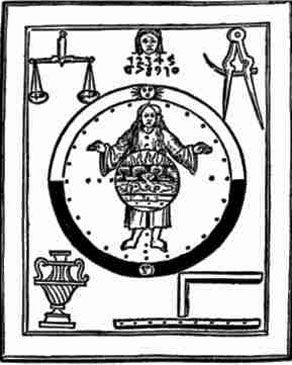Parzival
XXI -- Le Monde
Thanks for the extended quotation on "Sophia" from Wikipedia. Certainly the World may be this very Sophia. Gnostic themes entered the Grail stories, and might as well have entered the Tarot. In La Folie Perceval, a French manuscript of about 1330, the new Grail king is given a book of the secret sayings of Didymus, apparently the well-known now Gospel of Thomas, including the "secret words which the Living Jesus spoke and Didymos Judas Thomas wrote".( See Graham Phillips' Chalice of Magdalene, chapters 13-15, and opening verse to the Gospel of Thomas.) Now, the Gospel of Thomas includes key sayings that call for the harmonizing of male and female aspects of the human being, such as 22 and 114 : "...When you make the male and female into a single one, so that the male will not be male and the female not female,...then shall you enter the Kingdom" ( from saying 22) . Thus, XXI may be Sophia, or the whole image may be the perfected harmony of the Soul's male/female polarity, the Father-Mother in Man. The surrounding feminine mandorla, enclosed in symbols for the four gospels, all written by males, supports the message of ultimate unity beyond polarity . The center being is androgynous, in the enlightened state beyond opposed elements of being.
Thanks for the extended quotation on "Sophia" from Wikipedia. Certainly the World may be this very Sophia. Gnostic themes entered the Grail stories, and might as well have entered the Tarot. In La Folie Perceval, a French manuscript of about 1330, the new Grail king is given a book of the secret sayings of Didymus, apparently the well-known now Gospel of Thomas, including the "secret words which the Living Jesus spoke and Didymos Judas Thomas wrote".( See Graham Phillips' Chalice of Magdalene, chapters 13-15, and opening verse to the Gospel of Thomas.) Now, the Gospel of Thomas includes key sayings that call for the harmonizing of male and female aspects of the human being, such as 22 and 114 : "...When you make the male and female into a single one, so that the male will not be male and the female not female,...then shall you enter the Kingdom" ( from saying 22) . Thus, XXI may be Sophia, or the whole image may be the perfected harmony of the Soul's male/female polarity, the Father-Mother in Man. The surrounding feminine mandorla, enclosed in symbols for the four gospels, all written by males, supports the message of ultimate unity beyond polarity . The center being is androgynous, in the enlightened state beyond opposed elements of being.




